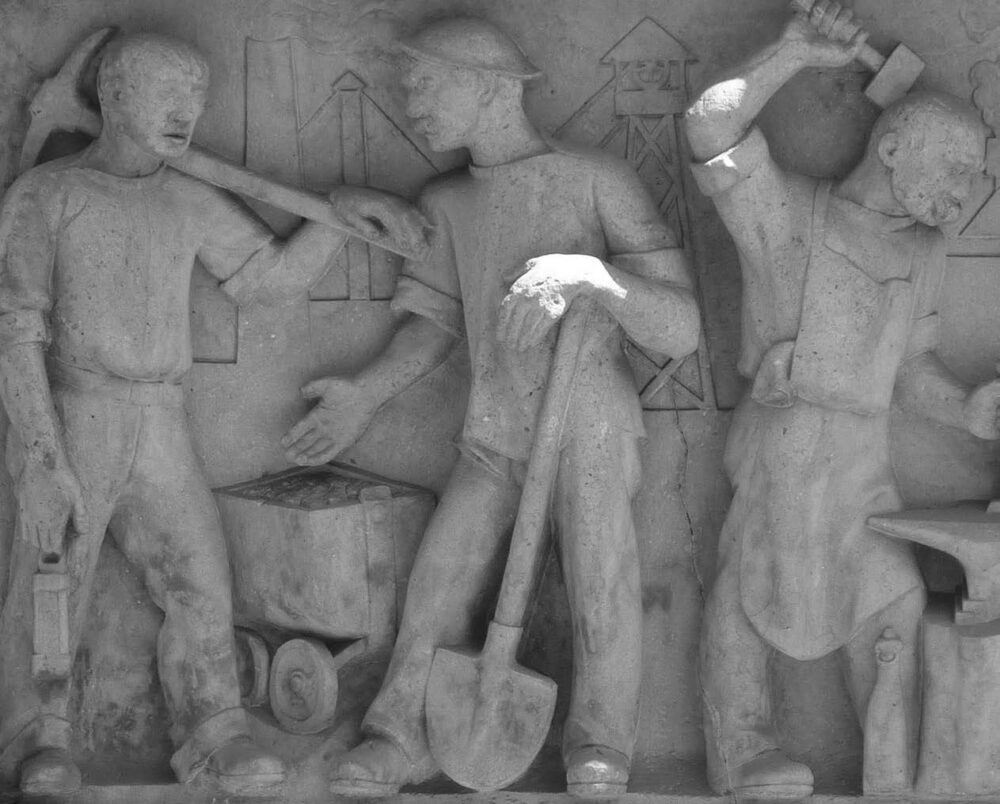The prominent German conservationist Axel Föhl, whose work focuses on industrial heritage, organized a section at the XIV Congress TICCIH in Freiberg in 2009 which, for the first time in the history of these congresses, dealt with the issue of how the arts (painting, sculpture, graphics, photography, film, literature) responded to the phenomenon of the industrial revolution and how the arts (particularly architectural sculpture) made a connection with the most highly industrial and technical architecture, as well to other typological categories of buildings. The interdisciplinary meetings were attended by historians of art and architecture, architects, museum workers and conservationists. The results were published in an anthology, later in 2013 in a monothematic number of the magazine Eselsohren (Art and the Industrial Revolution), in 2015 in an enlarged and supplemented Czech publication Industrial Buildings and the Arts (FÖHL, Axel – POPELOVÁ, Lenka (eds.), BOLLEREY, Franziska – SKREBSKÁ, Renata – KARLSTREMA, Inga – VIAENE, Patrick – ABILDGAAR, Hanne – GLAVOCIC, Daina. Industriál a_umení. Praha, CVUT 2015).The relationship between art and industry has been studied so far mainly in a connection with the visual arts. Even in the publication Industrial Buildings and the Arts, half of the contributions dealt with artistic manifestations, while the remainder concerned the interpretation of sculptural expressions on the theme of industry (as well as trade, finance and agriculture) for industrial and technical buildings, but also other typological ones. In this regard, the research target is unique. Although one of the most interesting aspects of industrial heritage, and one pointed out by such authors as Betsy Hunter Bradley (The Works: The Industrial Architecture of the United States, 1998) and Peter Navarson and Merlin Palmer (Industrial Archaeology, 2000), that topic has not been devoted sufficient attention. Only Gillian Darely has dealt completely with the description of the visual codes in industrial architecture in the book Factory, and at the same time he has emphasized their relation to social utopias of the era.Industrial heritage, as defined by the Charter for Industrial Heritage, consists of all the remains of the industrial culture which have a historical, technological, social, scientific or architectural value. Hence, the field of exploration necessarily includes the depiction of industrial processes and technologies, and the question of the aestheticisation of the industrial and technical buildings. By studying of these artistic expressions, information can be gained not only regarding the historical development of architecture and engineering, but also the development of processes and technologies (often already extinct), social and economic phenomena, lifestyle, etc. …

This work is licensed under a Creative Commons Attribution 4.0 International License.
